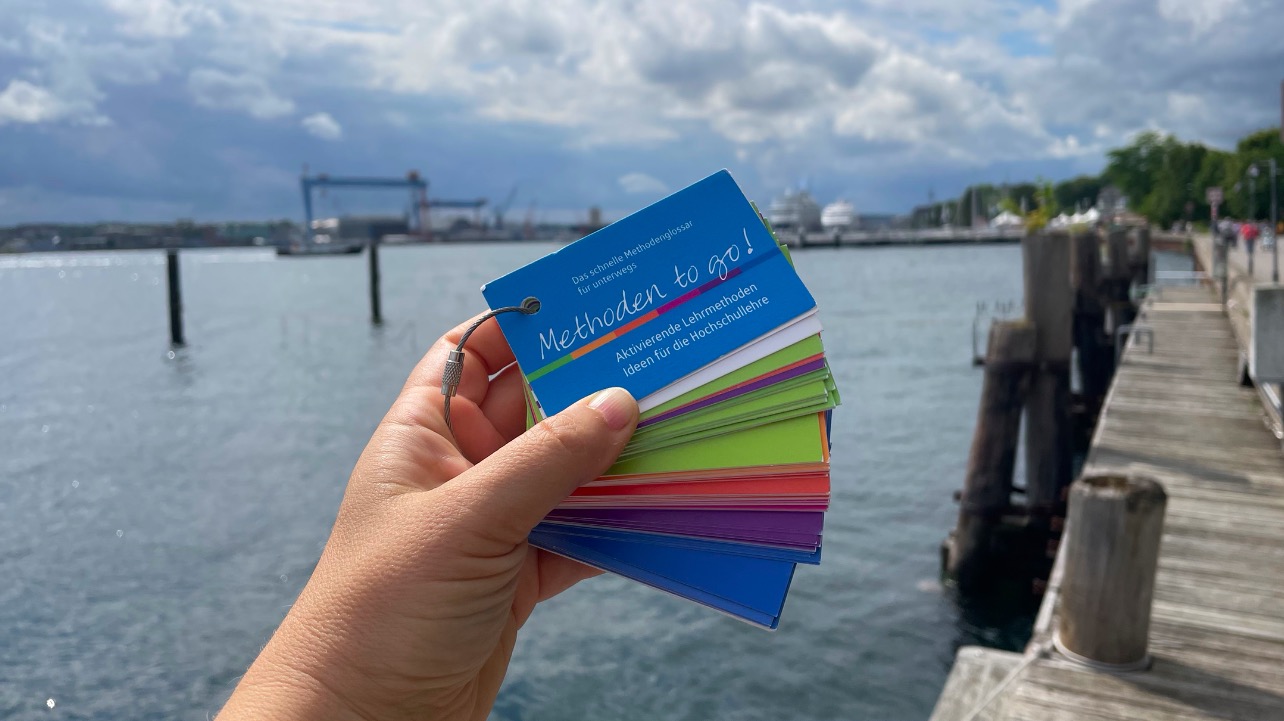
#Methods2Go: university teaching methods for acquring knowledge
More method ideas from E.-M. Schumacher’s “Methoden to go” pool of suggestions!
Today: methods to acquire knowledge.
Learning-speed duo
The “learning-speed duo” method works like this: The group is split into two, and everybody in each of the two sub-group gets the same text to read (or exercise to work on) individually. When people finish the task, they (non-verbally!) signal to the teacher, who then pairs them up with someone from the other group who has finished their task, too. The two of them then explain to each other what they just read/learned/did.
I really like the idea behind this method that different learning tempos are taken care of so that fast students don’t just sit and wait for everybody else to finish. But this could potentially increase pre-existing inequalities when the “strongest” students get paired up first, and then pairs get “weaker” over time (obviously, speed is not the best indicator of “strength”, they might also be less careful). But still, it might appear to students that there is a hierarchy implied if attention is drawn to how fast they finish a task.
Also I wonder how much disturbance is introduced in the classroom when students have to physically relocate to form the new pairs, and then start discussing. So I am wondering if this method wouldn’t work much better online, when you initially have two breakout rooms (or even just assign two different tasks to everybody in your main room) and when students DM the instructor that they have finished the task, they are sent into breakout rooms with a partner who worked on the other task. As an instructor, you would need to coordinate this carefully, but I can see that working well without too much of a disruption to people still working on the initial task, and also without drawing a lot of attention to how fast someone is working.
Sandwich
I had heard of the sandwich method to give feedback (not a fan — I very much prefer the continue-start-stop method!), but wasn’t aware of this method of the same name!
For this sandwich, the teacher presents a task and asks students to think about how that task could be solved. Student suggestions for what methods could be used or how one would start working on the task are collected. This is the bottom bun, the base of the sandwich.
The teacher then explains whatever they think needs to be explained in order to solve the task: theories, methods, ways to calculate certain things, … This is the salad, cheese or whatever other interesting stuff inside the sandwich.
Students then use this to actually do the task: this is the top of the sandwich.
What I like about this method is the suggestion of explicitly giving students room to brainstorm and discuss ways to approach and solve a task before students start working on it; making sure that everybody has the necessary background information and clues to start working on it, rather than discussing all of this after students were supposed to have solved it (when some students are demotivated already because they couldn’t do it, and others don’t need that discussion any more because they had already successfully done it).
That’s it for today! We’ll continue next #TeachingTuesday with “methods to discuss content”.
What other methods do you like for fascilitating knowledge acquisition?
Justin says:
Awesome stuff…
It would be interesting to try and quantify if these methods work… I’m definitely going to try them but how could we share info to try and share results
Mirjam says:
Thank you! Yes, that wold be super interesting! I usually post about methods I try, so maybe if you let me know when you’ve tried them we can compare notes & possibly write it up together? Might also inspire other people to join if we lead by example & share it via blog/Twitter :)